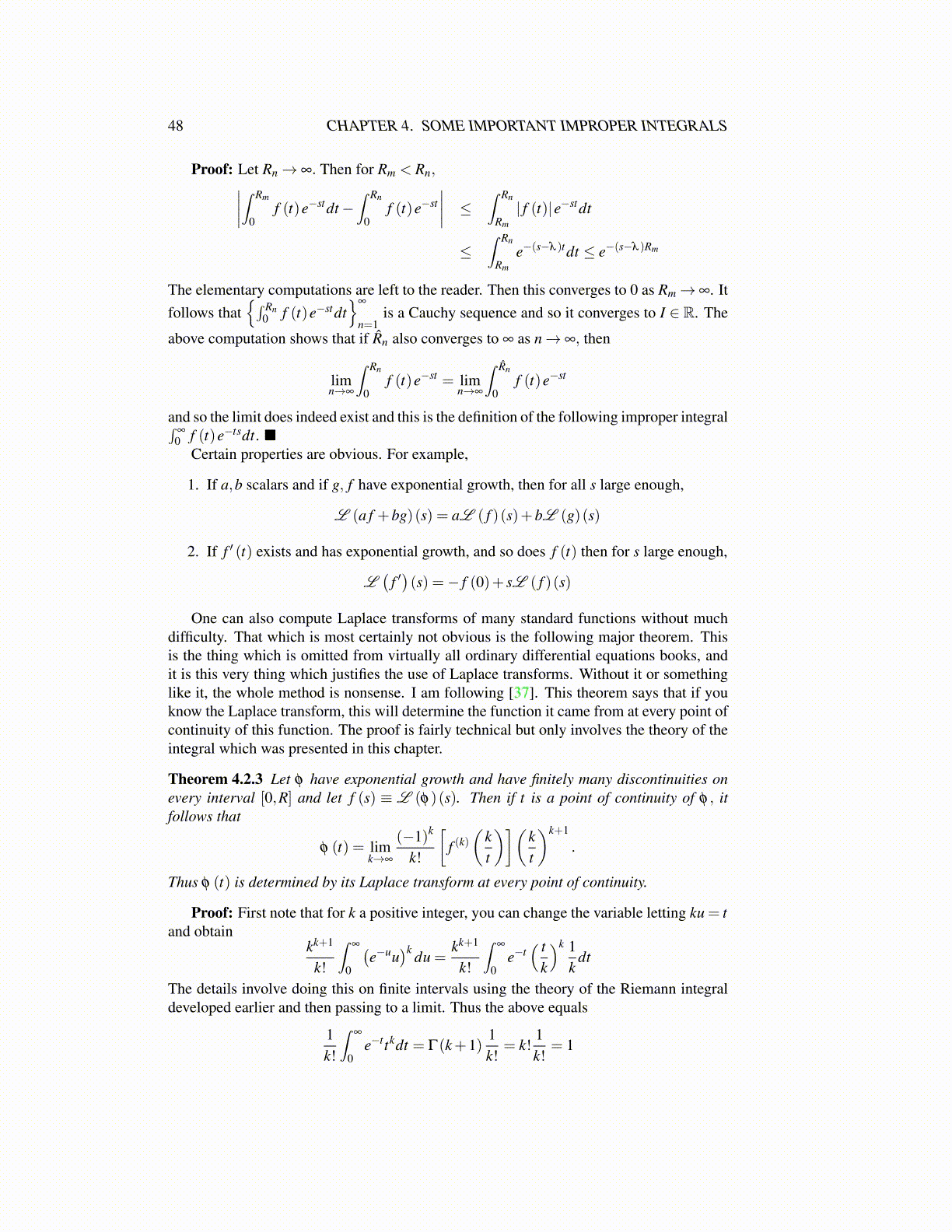
48 CHAPTER 4. SOME IMPORTANT IMPROPER INTEGRALS
Proof: Let Rn→ ∞. Then for Rm < Rn,∣∣∣∣∫ Rm
0f (t)e−stdt−
∫ Rn
0f (t)e−st
∣∣∣∣ ≤ ∫ Rn
Rm
| f (t)|e−stdt
≤∫ Rn
Rm
e−(s−λ )tdt ≤ e−(s−λ )Rm
The elementary computations are left to the reader. Then this converges to 0 as Rm→∞. Itfollows that
{∫ Rn0 f (t)e−stdt
}∞
n=1is a Cauchy sequence and so it converges to I ∈ R. The
above computation shows that if R̂n also converges to ∞ as n→ ∞, then
limn→∞
∫ Rn
0f (t)e−st = lim
n→∞
∫ R̂n
0f (t)e−st
and so the limit does indeed exist and this is the definition of the following improper integral∫∞
0 f (t)e−tsdt. ■Certain properties are obvious. For example,
1. If a,b scalars and if g, f have exponential growth, then for all s large enough,
L (a f +bg)(s) = aL ( f )(s)+bL (g)(s)
2. If f ′ (t) exists and has exponential growth, and so does f (t) then for s large enough,
L(
f ′)(s) =− f (0)+ sL ( f )(s)
One can also compute Laplace transforms of many standard functions without muchdifficulty. That which is most certainly not obvious is the following major theorem. Thisis the thing which is omitted from virtually all ordinary differential equations books, andit is this very thing which justifies the use of Laplace transforms. Without it or somethinglike it, the whole method is nonsense. I am following [37]. This theorem says that if youknow the Laplace transform, this will determine the function it came from at every point ofcontinuity of this function. The proof is fairly technical but only involves the theory of theintegral which was presented in this chapter.
Theorem 4.2.3 Let φ have exponential growth and have finitely many discontinuities onevery interval [0,R] and let f (s) ≡ L (φ)(s). Then if t is a point of continuity of φ , itfollows that
φ (t) = limk→∞
(−1)k
k!
[f (k)(
kt
)](kt
)k+1
.
Thus φ (t) is determined by its Laplace transform at every point of continuity.
Proof: First note that for k a positive integer, you can change the variable letting ku = tand obtain
kk+1
k!
∫∞
0
(e−uu
)k du =kk+1
k!
∫∞
0e−t( t
k
)k 1k
dt
The details involve doing this on finite intervals using the theory of the Riemann integraldeveloped earlier and then passing to a limit. Thus the above equals
1k!
∫∞
0e−ttkdt = Γ(k+1)
1k!
= k!1k!
= 1